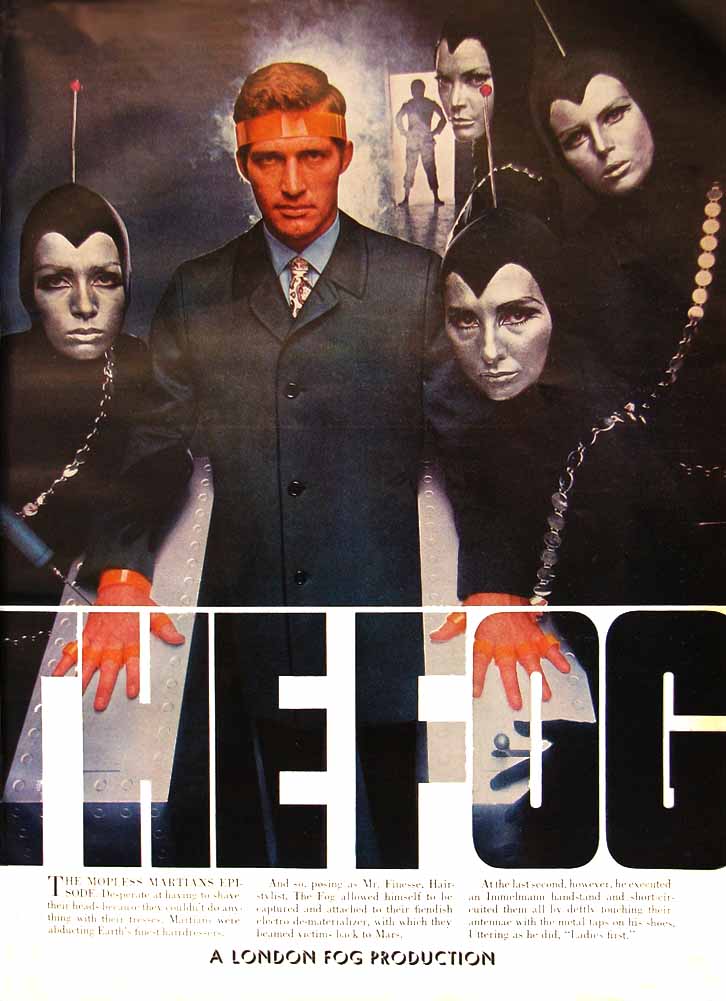 I've run through every bit of fluid in this thing in just a week. Hmm. Maybe I should cut back on my smoking. 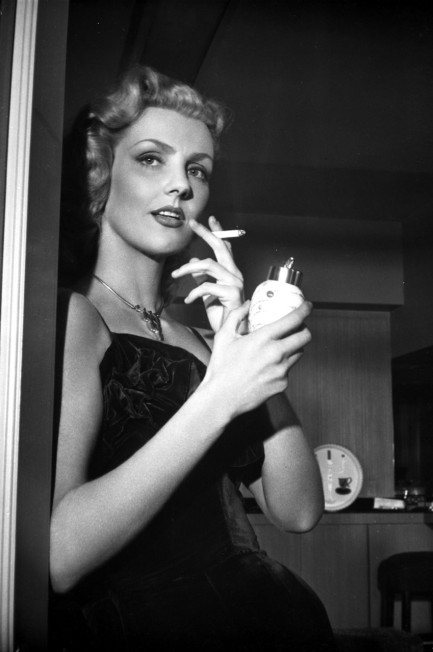
Dolores Moran's film career started with a bang when her first credited role was as the smoldering Hellene de Bursac in the 1944 thriller To Have and Have Not when she was only eighteen. She was the reason Humphrey Bogart tossed off the memorable quip, “I don't understand what kind of a war you guys are fighting. Lugging your wives with you. Don't you get enough of them at home?” It would have been easy to assume nobody would ever get enough of Moran, but after very nearly outshining Lauren Bacall in that film she managed perhaps ten more credited screen roles. Health issues had partly to do with it, and a marriage at age twenty probably curtailed her as well, though her husband was the film producer Benedict Bogeaus. But she wasn't the first flame to fizzle in Hollywood—that's part of the nature of the place. The above shot was made as a promo for her next-to-last film Count the Hours. That was in 1953.
 Some guys just can't catch a break. 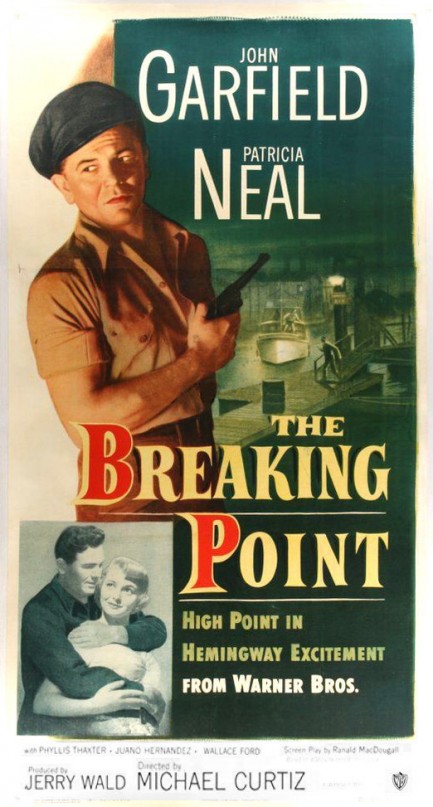
The Breaking Point is the second of three Hollywood adaptations of Ernest Hemingway's novel To Have and Have Not, and it's a very good one. You're already starting from an advantageous point when you have John Garfield in the starring role. He could act, and this part requires quite a bit from him. This was his next-to-last movie—he would be dead two years later, victim of a congenital heart problem, exacerbated by high stress, reportedly from his blacklisting that was the result efforts by commie hunters.
Casablanca director Michael Curtiz is on board here too, and he does a masterful job bringing the story to life. Curtiz, or Warner Brothers, or both, decided to transplant the novel's action from Cuba to Newport Beach, but the theme of a man caught in untenable economic circumstances remains. Those who wanted a reasonably faithful adaptation of Hemingway's story got it in this film. The first version, also called To Have and Have Not, was amazing but had little in common with the source material. The third adaptation, The Gun Runners, was also good but downplayed certain political themes. (There's also an Iranian version we haven't seen and which we'll leave aside for now.)
So, which of the three U.S. versions is best? Is it really a competition? They're all compulsively watchable, but this effort with Garfield is the grittiest by far, and the most affecting. It's strange—To Have and Have Not is supposed to be Hemingway's worst book, but with three good movies made from it, maybe it isn't that bad after all. Perhaps because it's a work from one of the most influential authors ever to write in English, the bar was just set too high. Maybe it really is Hemingway at his worst, but personally we think it's very good. The Breaking Point premiered in the U.S. today in 1950. 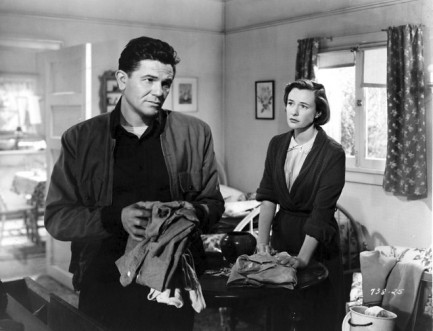 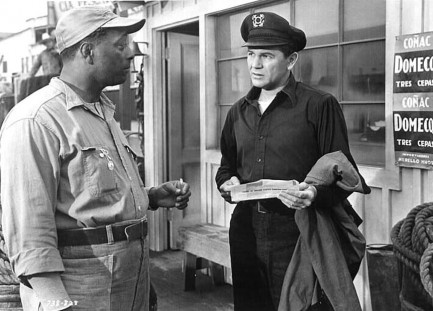 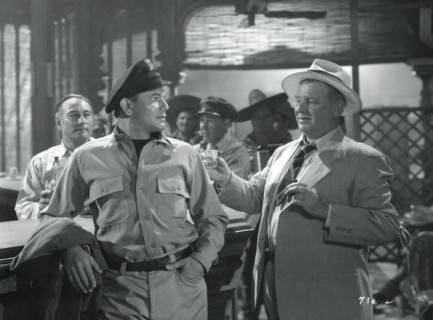 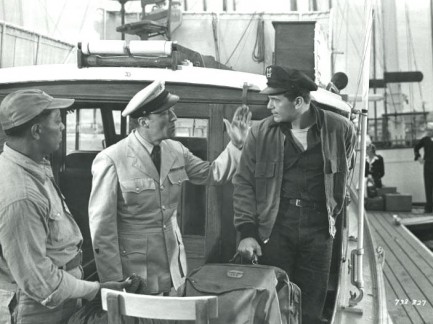 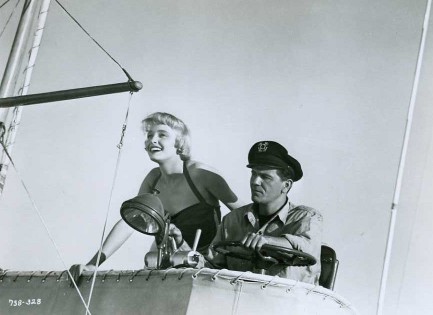 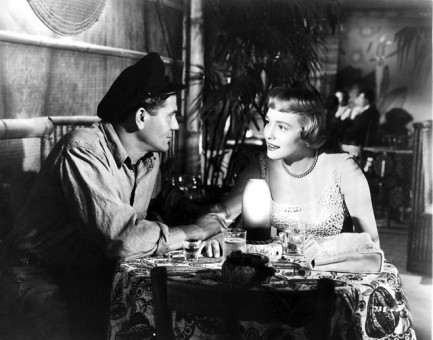  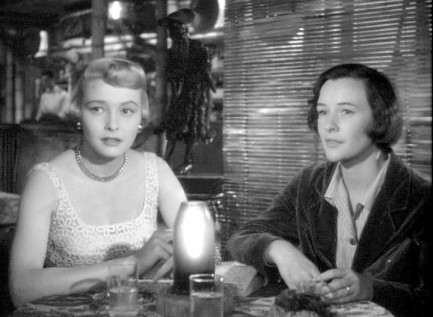 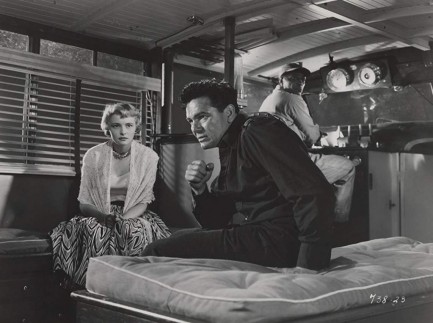 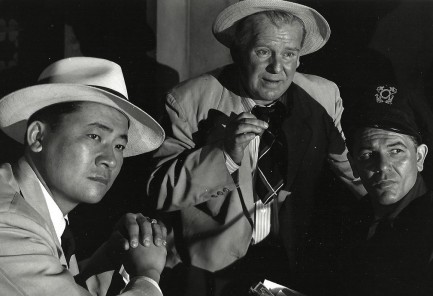 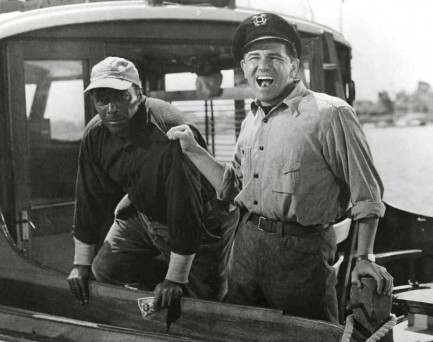 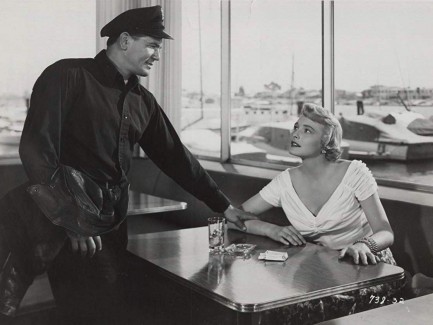 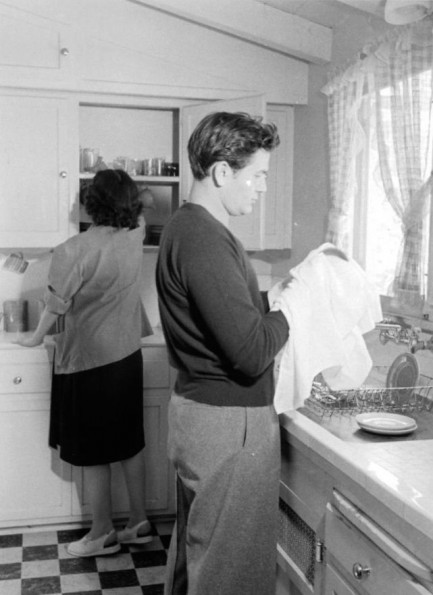 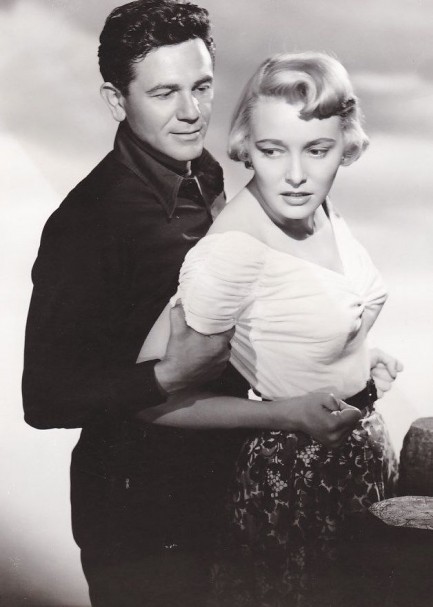
 Hemingway's lament for the downtrodden working class is supposed to be his worst novel. But is it really? 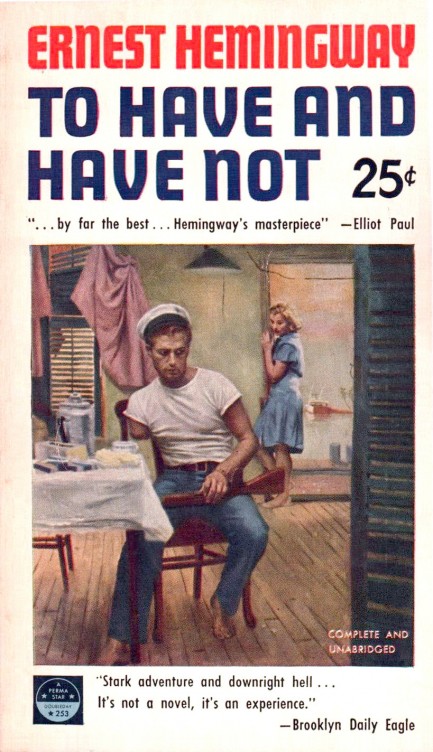
Don't let the cover blurbs fool you. In general To Have and Have Not is considered by critics to be Ernest Hemingway's worst novel. Originally published in 1937, it was completely rewritten and became a great 1944 movie with Humphrey Bogart and Lauren Bacall. If you've already seen the movie but never read the book, hold onto your hats, because this is extraordinarily rough stuff from Hemingway, a tale of desperation and murder in the depths of the Great Depression. Harry Morgan is a Key West boat captain who's stiffed for $825 after his three-week charter skips town. That would be about $15,000 in today's money, so it's no surprise that losing this bundle means Morgan, who's married, has three kids, the usual assortment of bills and responsibilities, and has spent his life fighting to get ahead, is now destitute.
If you opt to read the book, make sure not to gloss over exactly how far in the hole Morgan is. $825 dollars would bend the morals of most people in 1937, just as $15,000 would today. After being cheated out of this cash he makes a fateful decision to turn criminal himself by running illegals from Cuba to Florida. That's when things go from bad to worse. If you look closely at the cover art on this Perma Books edition from 1953 you'll see what the result of Morgan's criminal foray was. That's one reason cover art is so interesting. The scene the artist chooses to depict—in this case it's Tom Dunn—can sometimes be so specific as to give away an important plot point. If you can't tell what we're talking about by looking at the art we'll give you a hint. What happens to Morgan is the also title of an earlier Hemingway book.
But moving on, To Have and Have Not is—we'll just come out and say it—brutally racist. There are some who would like to gaslight you into thinking you're seeing something that isn't there, and others who would prefer you to ignore this, but you shouldn't, because racism is actually pivotal in the narrative. Morgan's initial foray into crime is against people he clearly feels are subhuman. They and other ethnic groups are referred to with slurs, and these come not just from Morgan's mouth, and from his thoughts, but from the writer's thoughts too. There are places where Morgan uses actual names to refer to characters that Hemingway still refers to by slurs. Think: “Hey Joe, give me a hand with these poles,” said Harry. The [slur] put down his coffee and helped Harry with the poles. So while it's always good to separate the author from their fiction so they have freedom to create any sort of characters they wish, it still raises an eyebrow when you read something like that.
Another aspect of To Have and Have Not that may jar is its lack of sympathetic characters. Morgan's ex-prostitute wife Marie is probably the nicest person in the book, and even she drops n-bombs all over place. But you have to root for someone, so it's her and Harry. You do it because they're at the economic mercy of terrible people. Most of these folks—who are generally of a better class—wouldn't use racial slurs, but they also wouldn't think twice about ruining someone for a few dollars. And while Harry employs a black man and gets along with him fine, you can be sure none of his rich charters would let a black man deign to speak to them. So in its way, To Have and Have Not is relevant in 2020 by starring a working class character who's uncouth, uneducated, and devoid of genuine empathy, but who constantly deals with people that think they're better than him and really aren't.
This is why losing the charter and those $825 bucks is such a clever way to open the novel. The charter, Johnson, flies away and doubtless never gives what he did much thought, but in shafting a working man creates wreckage that crushes not just the man he cheated, but those around him. We think this is the way to focus on the book if you read it—acknowledge the obvious deficiencies of Harry Morgan, but pay close attention to the secondary characters. This is what Hemingway wanted, which is why Morgan's narration lasts for only a while. Everything after his first crime caper is told from outside his point of view. As the book goes on, Hemingway drags you deeper into the lives of these ancillary characters, dispassionately leaving a struggling Morgan to recede into the distance.
So is To Have and Have Not Hemingway's worst book? We don't like it as much as his other works, but with its changes in point-of-view, mood, and even narrative tense, it's also more challenging than those books. Ultimately, the most serious indictment of To Have and Have Not comes from the author himself—he thought it was his worst book too. And who are we argue with Ernest Hemingway? But on the other hand, when you write The Sun Also Rises and For Whom the Bell Tolls, and win a Pulitzer Prize for The Old Man and the Sea, and later win a Nobel Prize for your body of work, your worst book can still be pretty good.
 Once upon a time there was nobody hotter than Hemingway. 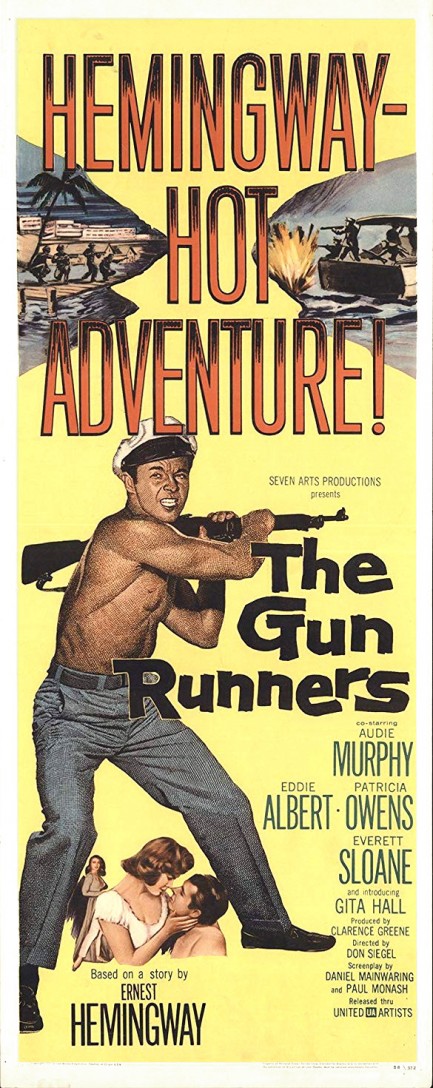
We'd heard that The Gun Runners, which premiered in Britain today in 1958, is the most faithful of the several film adaptations of Ernest Hemingway's novel To Have and Have Not. It isn't that close, actually, but it's Hemingway-hot! according to the promo poster. If we're catching the subtle inference correctly, that must mean it's good. Maybe, but what it really shows is Hemingway was so famous at this time that his mere name was a selling point. Think—how many novelists' names have you seen above the title on a movie poster in recent years? Stephen King comes to mind. Maybe Clive Barker, for a minute there. Michael Crichton? Possibly. After those three we draw a blank.
Well, we like Hemingway, and we love the Bogart/Bacall adaptation of To Have and Have Not, though it has nothing to do with the book. This Hemingway-hot! version stars Audie Murphy—yes, that one, and he's a solid enough actor—as a boat captain working out of Key West who gets ensnared in a dangerous scheme that involves smuggling weapons to Cuba. Eddie Albert as the heavy is as amoral as they come, and in supporting roles you get Patricia Owens, Gita Hall, and Everett Sloane. Sometimes the performances in old movies don't feel quite right to modern sensibilities, but you could transplant Albert's performance note for note into a new movie. Acting that stands the test of time that strongly is rare.
Another thing that stands the test of time are the themes explored here. In the novel, the item some people have that others have not is money and the freedom it brings, but in The Gun Runners what people either have or have not would appear to be scruples. It's no surprise that the structural inequality aspect of Hemingway's text was downplayed—who wanted to hear about that in 1958, when so many Americans could work a simple job yet afford a car, a house, and a family? But people sure have a clear understanding of inequality these days, don't they? For that reason alone, we think this flick will resonate with many. We recommend putting this in your queue. In the end it really is Hemingway-hot! 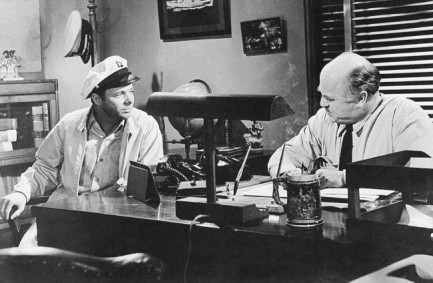 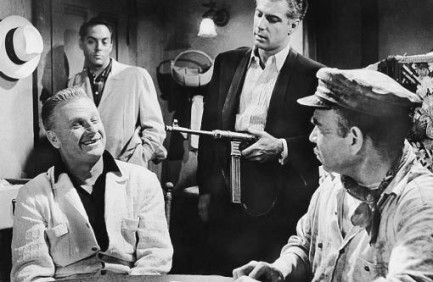 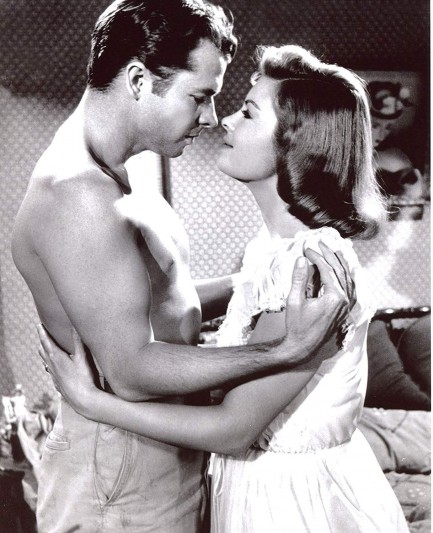 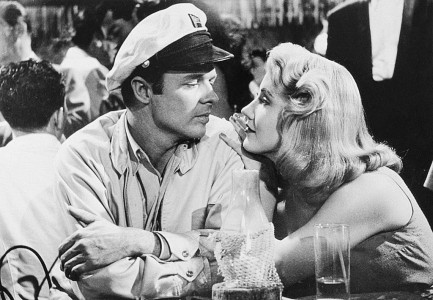  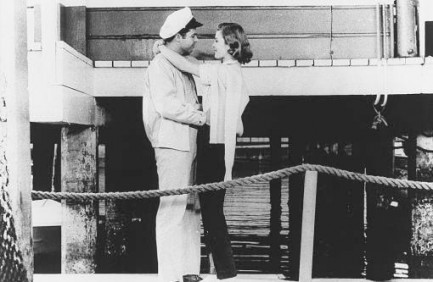 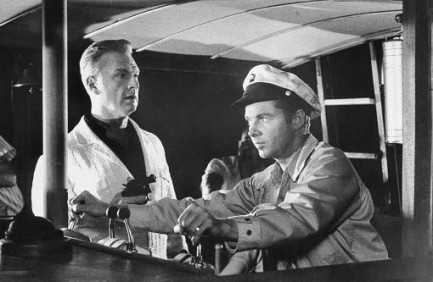 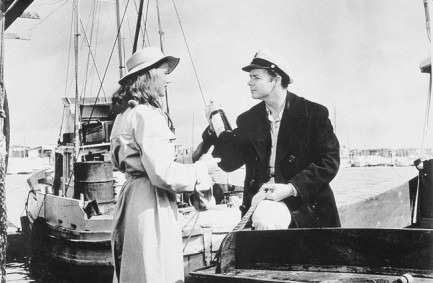 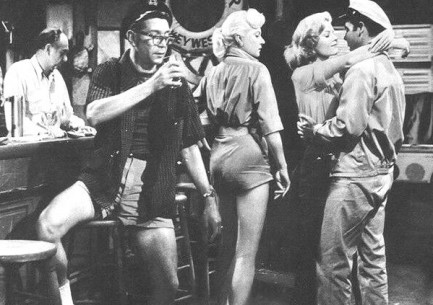 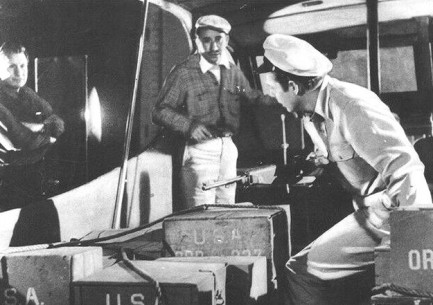 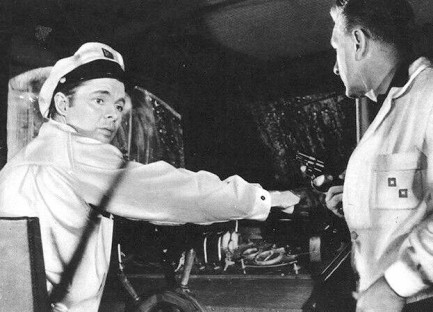 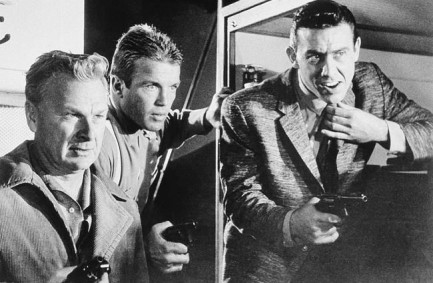 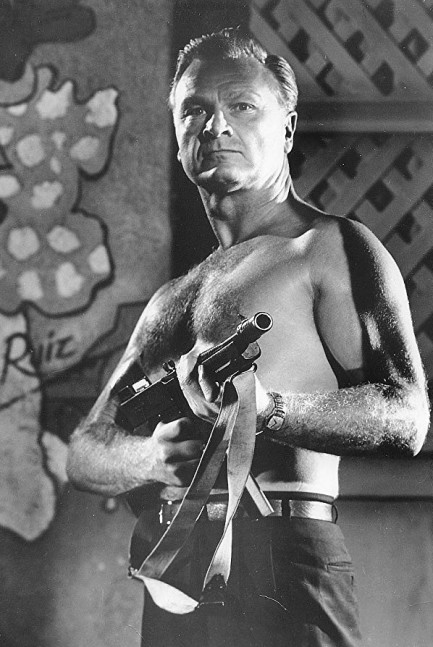 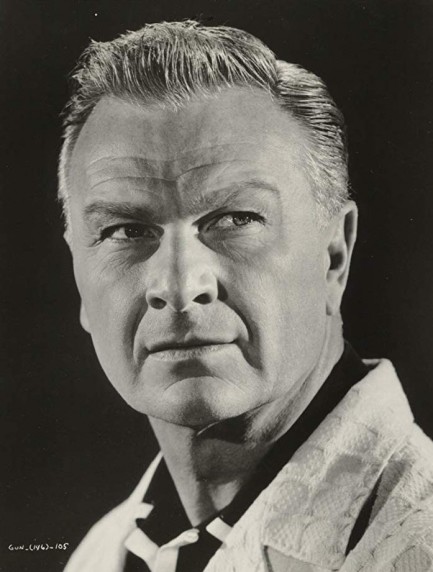
 Think you can wear an outfit like this? Not a chance. 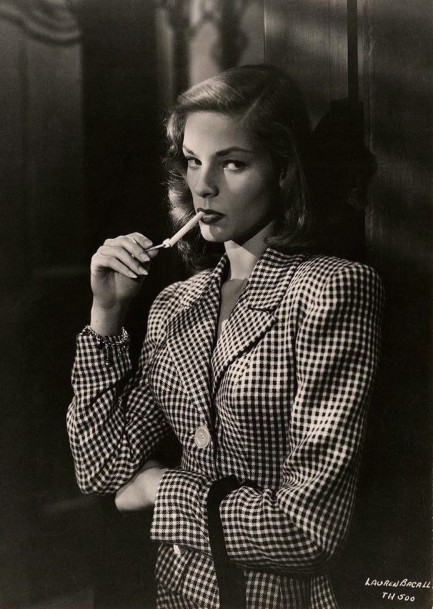
Above, a beautiful shot of a checkered suit wearing Lauren Bacall made when she was filming To Have and Have Not, which according to legend came about when Howard Hawks told Ernest Hemingway he could make a movie out of Papa's worst book. Worst is relative when you're talking about the most revolutionary author of his era. But yes, as apples to oranges go, in some ways the movie surpasses the book. It's one of our favorite vintage films. 1944 on this image.
 They say you can't have everything but To Have and Have Not comes close. 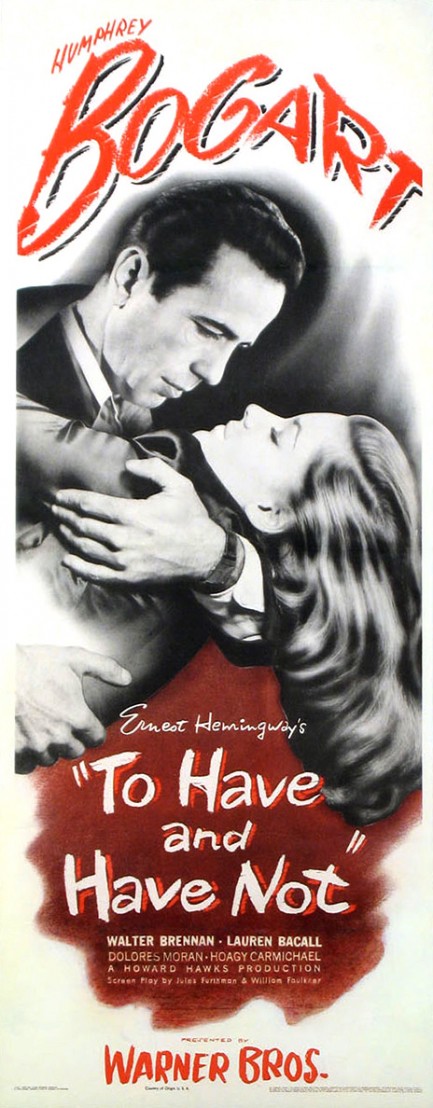
This one has been a long time coming to Pulp Intl. To Have and Have Not. We love this flick. We never bothered to highlight it because it's so familiar to so many, but with the Pulp Intl. girlfriends out of town (did we mention that yet?) we decided to revisit a few movies we've seen often. First off, we get it, Hemingway fans. The film mutilated his 1937 novel. But what a shock—Warner Brothers was not going to make a Marxist themed movie in 1944. Hemingway may have, we like to imagine, wanted to keep the book out of Hollywood's hands for that very reason. But when Warners came across with a fat offer he was like, “Well, sure, okay, I suppose that amount of money will take the sting out of you whitewashing my Marxist opus.” You, see everyone has a price.
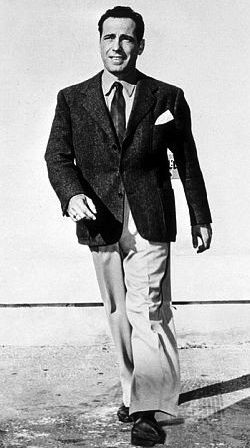 Howard Hawks directed, and Jules Furthman and William Faulkner wrote a screenplay that changed the location of the novel, its time period, its subtext, and its characters. Basically, Warners wanted a follow-up to Casablanca, and that's exactly what they got, though To Have and Have Not differs from Casablanca by being light-hearted in general, and wickedly comical in parts. But there are also thrills aplenty. The basic idea is Humphrey Bogart plays a diffident charter boat captain in French Martinique who finds himself drawn into World War II thanks to an idealistic anti-Vichy cabal that plans to rescue a French patriot imprisoned on Devil's Island. Howard Hawks directed, and Jules Furthman and William Faulkner wrote a screenplay that changed the location of the novel, its time period, its subtext, and its characters. Basically, Warners wanted a follow-up to Casablanca, and that's exactly what they got, though To Have and Have Not differs from Casablanca by being light-hearted in general, and wickedly comical in parts. But there are also thrills aplenty. The basic idea is Humphrey Bogart plays a diffident charter boat captain in French Martinique who finds himself drawn into World War II thanks to an idealistic anti-Vichy cabal that plans to rescue a French patriot imprisoned on Devil's Island.
Everything and everybody in the film is great. Lauren Bacall, in her debut, brings just the right tone to her character Marie Browning, Walter Brennan puts on a physical acting clinic as Bogart's alcoholic sidekick, and as the Vichy administrator of Martinique, Dan Seymour channels Major Strasser from Casablanca, adding a touch of torpor meant to disguise his snake-deadly nature. The film also adds great music performances in the down and dirty Bar du Zombie and the café of Hotel Marquis, with Hoagie Carmichael taking on the Sam role from Casablanca. To Have and Have Not is so iconic it has been studied in university courses and written of in modern treatises about race. The latter is a lot to pile onto this lightweight adventure. Set in the Caribbean, it tries to at least portray a high level of racial inclusiveness, though not perfectly.
There's one more reason to watch the movie. We've seen it so much we've developed a drinking game from it. We've developed lots of drinking games from movies, but don't generally play them when the Pulp Intl. girlfriends are around (did we mention they're out of town?). Take a shot every time someone throws something in the water. That's it. Bottles, matches, whatever. If you're really brave, take a shot every time someone litters, whether at sea, on land, or indoors. It's interesting to observe littering behavior from an era when the environment was thought to be boundless and impossible to ruin. As members of a generation trained to get our garbage in a receptacle at all costs, the polluting here is really funny to see. 10 out of 10 for this movie. Watch it. Love it. Watch it again. It premiered in the U.S. today in 1944. 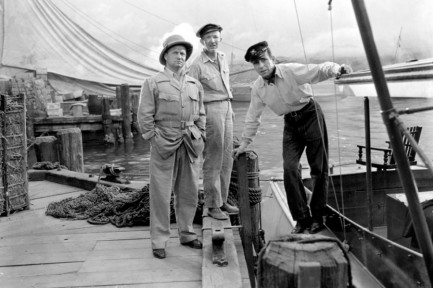 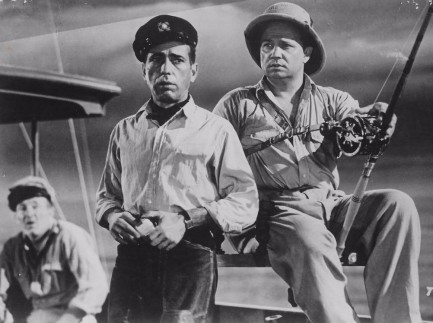 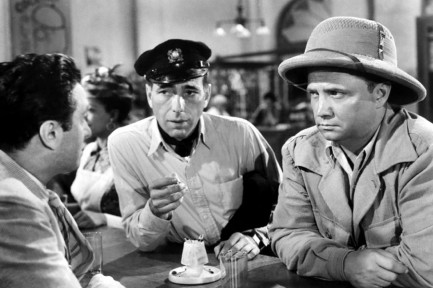 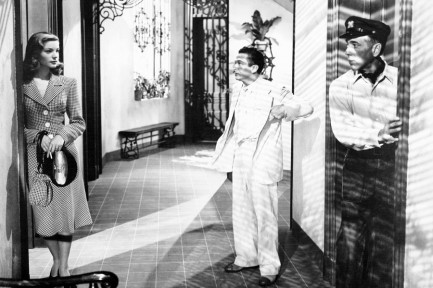  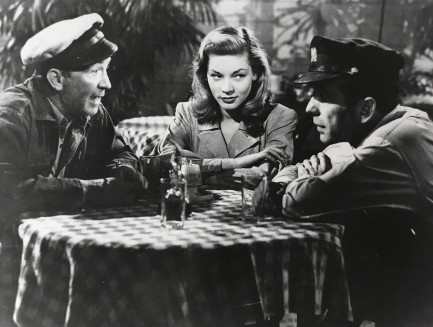 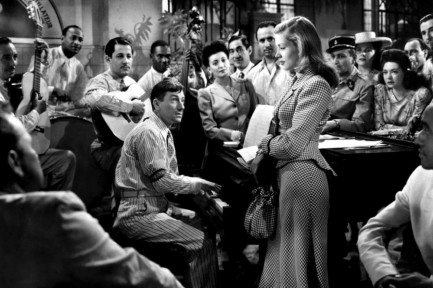 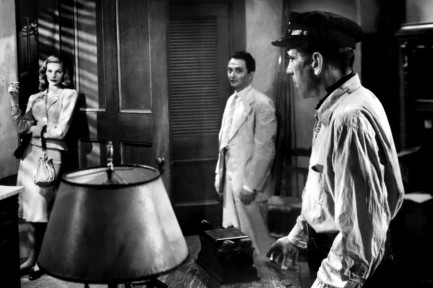 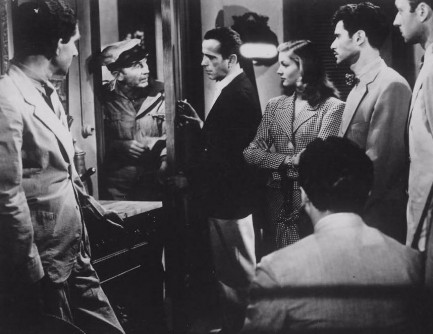 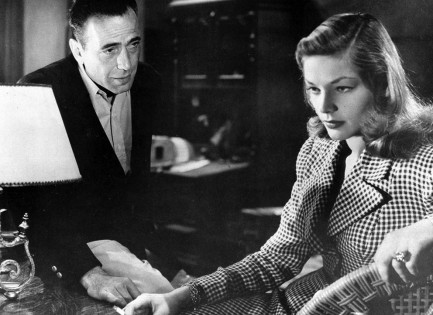 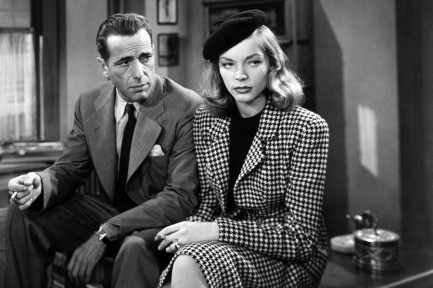 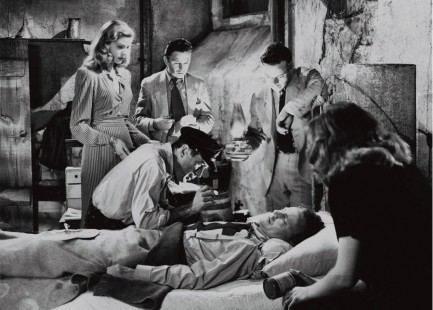 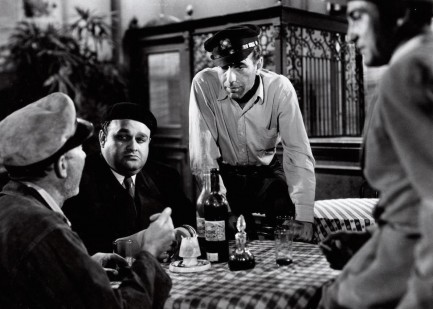  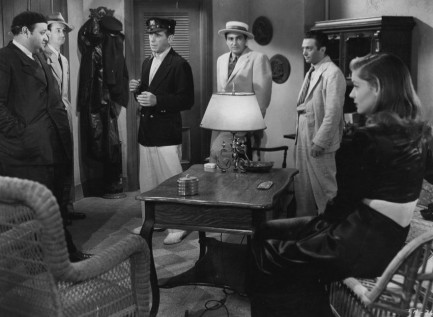 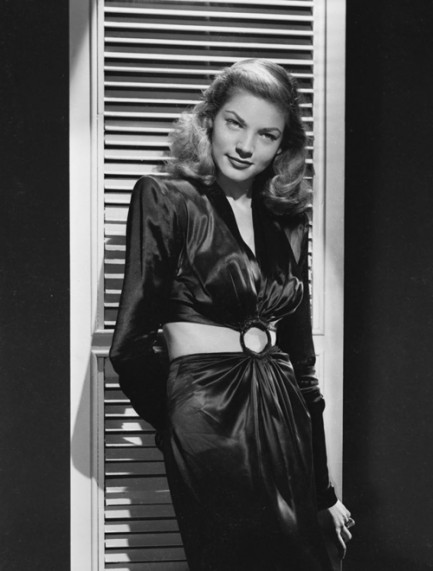
 Italian master’s genius spanned decades.
Back in August we showed you a poster from Luigi Martinati, who worked from 1923 to 1967, and said we'd get back to him. Below, seven more great promotional pieces with his distinctive signature on each.
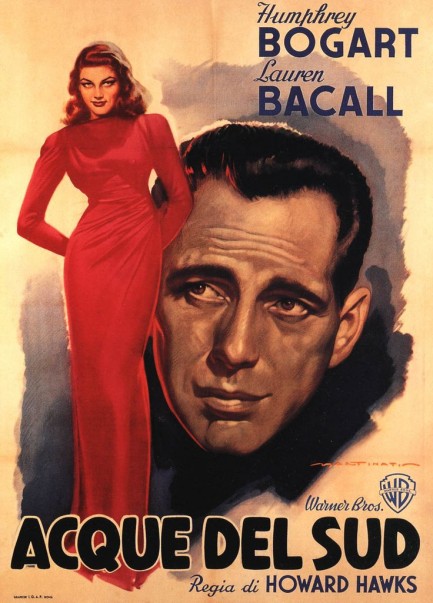 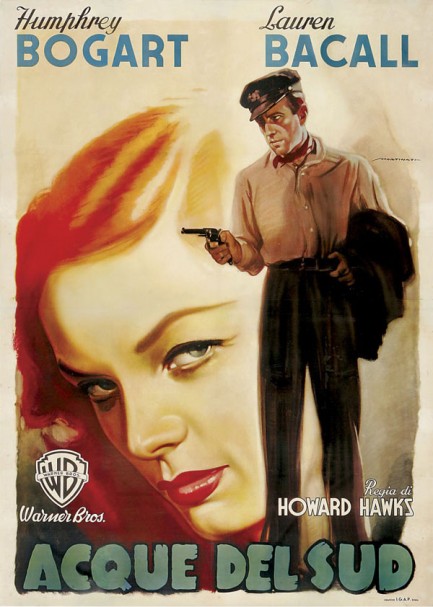
To Have and Have Not 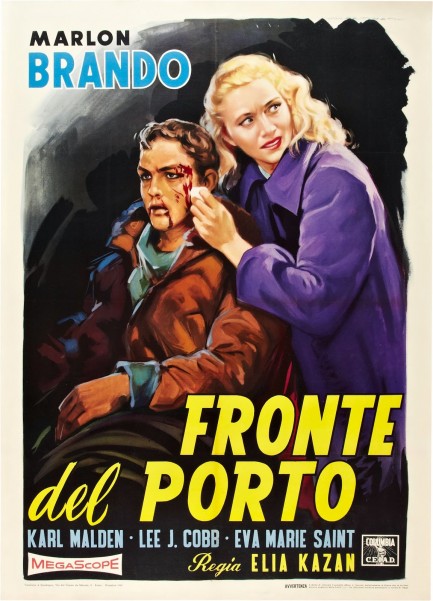
On the Waterfront 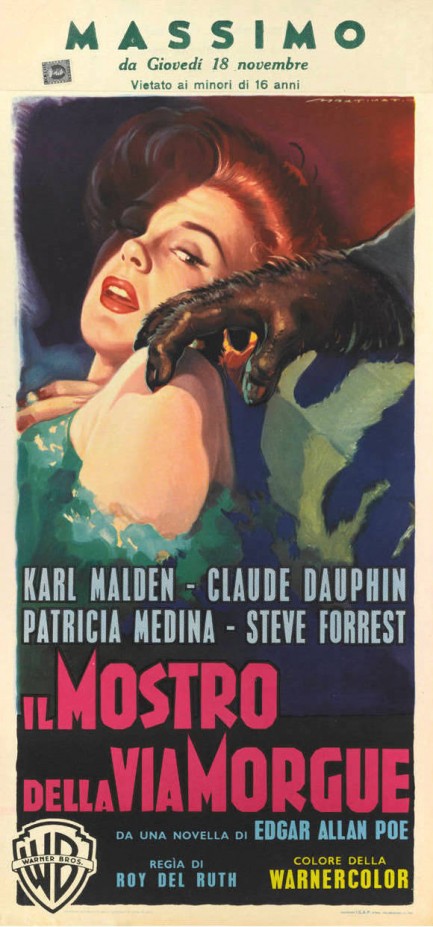
Phantom of the Rue Morgue 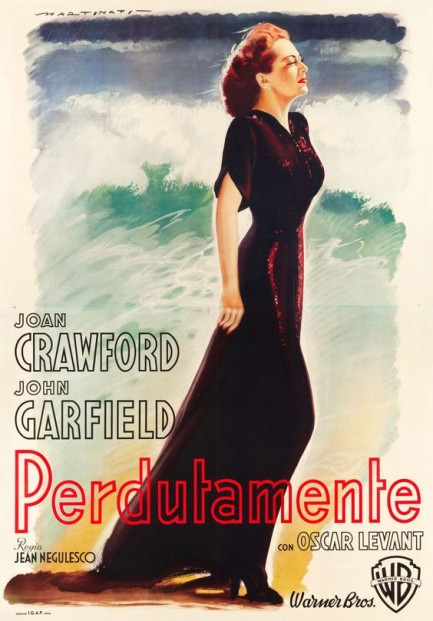
Humoresque 
Flamingo Road 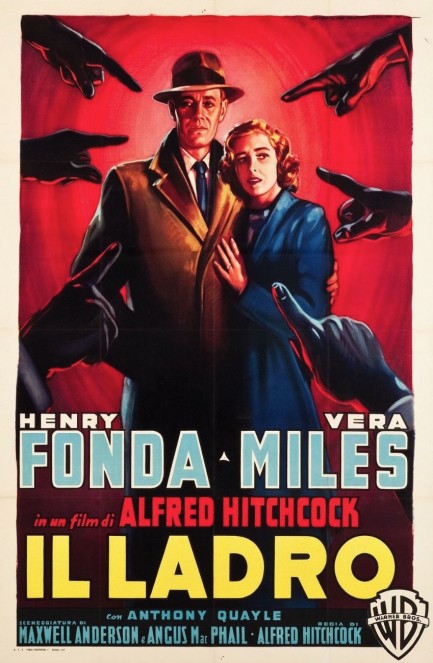
The Wrong Man
 Slipping into darkness. 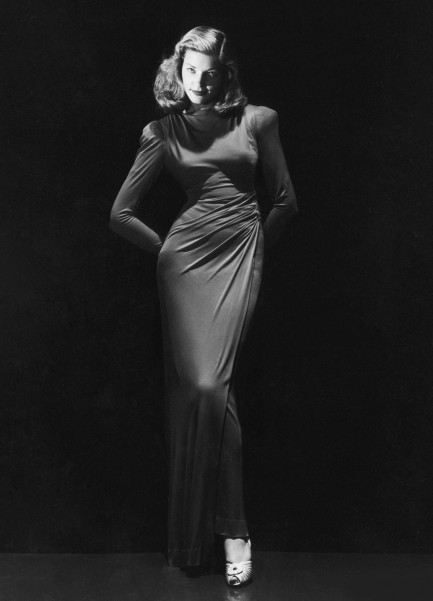
Lauren Bacall appears here in what may be her most famous publicity image, gazing from the darkness with a knowing, mischievous, heavy-lidded look she made her trademark in The Big Sleep, Dark Passage, and To Have and Have Not, three films that were a sort of informal trifecta of film noir. She also appeared in Key Largo, less a noir than a melodrama, but still excellent. All co-starred Humphrey Bogart, who she married in the middle of this run of films and remained married to until his death in 1957. Bacall joins him more than half a century later, aged eighty-nine.
 For a good time, Bacall. 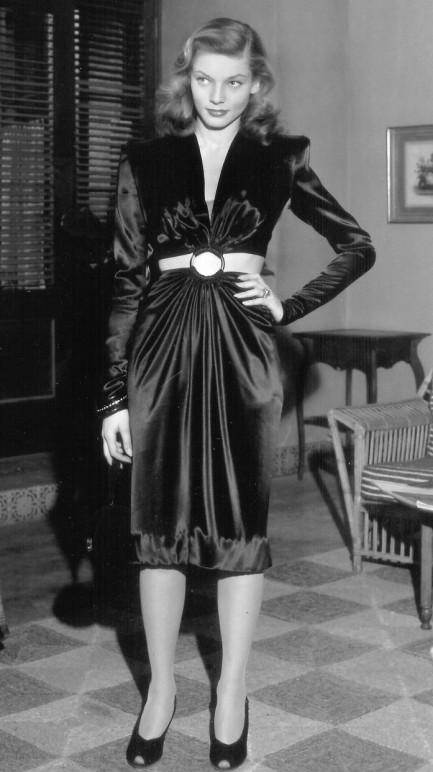
Above, a 1945 promo shot of a midriff baring Lauren Bacall looking ready to make some mischief. The photo was made for the film To Have and Have Not, from the same sessions that produced these images. Lorenz curves, by the way, describe inequality in wealth or size. We think Bacall is inequitably beautiful here.

|
 |

The headlines that mattered yesteryear.
2003—Hope Dies
Film legend Bob Hope dies of pneumonia two months after celebrating his 100th birthday. 1945—Churchill Given the Sack
In spite of admiring Winston Churchill as a great wartime leader, Britons elect
Clement Attlee the nation's new prime minister in a sweeping victory for the Labour Party over the Conservatives. 1952—Evita Peron Dies
Eva Duarte de Peron, aka Evita, wife of the president of the Argentine Republic, dies from cancer at age 33. Evita had brought the working classes into a position of political power never witnessed before, but was hated by the nation's powerful military class. She is lain to rest in Milan, Italy in a secret grave under a nun's name, but is eventually returned to Argentina for reburial beside her husband in 1974. 1943—Mussolini Calls It Quits
Italian dictator Benito Mussolini steps down as head of the armed forces and the government. It soon becomes clear that Il Duce did not relinquish power voluntarily, but was forced to resign after former Fascist colleagues turned against him. He is later installed by Germany as leader of the Italian Social Republic in the north of the country, but is killed by partisans in 1945.
|

|
|

It's easy. We have an uploader that makes it a snap. Use it to submit your art, text, header, and subhead. Your post can be funny, serious, or anything in between, as long as it's vintage pulp. You'll get a byline and experience the fleeting pride of free authorship. We'll edit your post for typos, but the rest is up to you. Click here to give us your best shot.

|
|



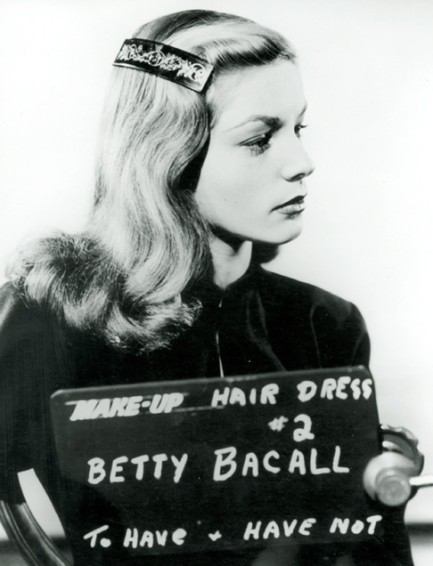
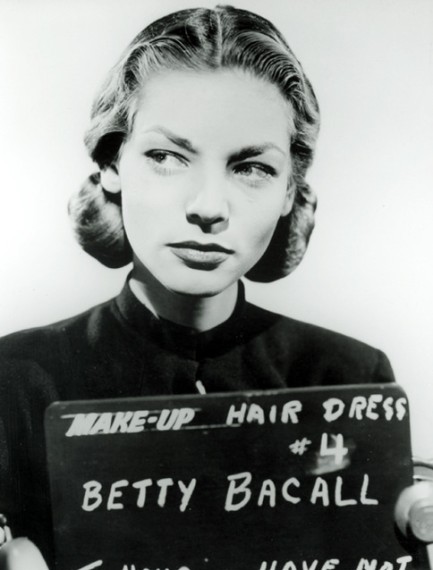
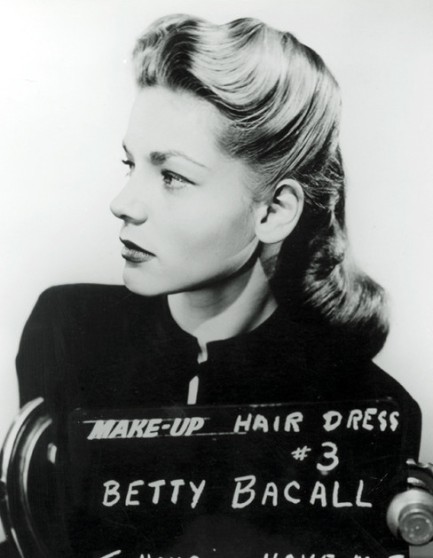
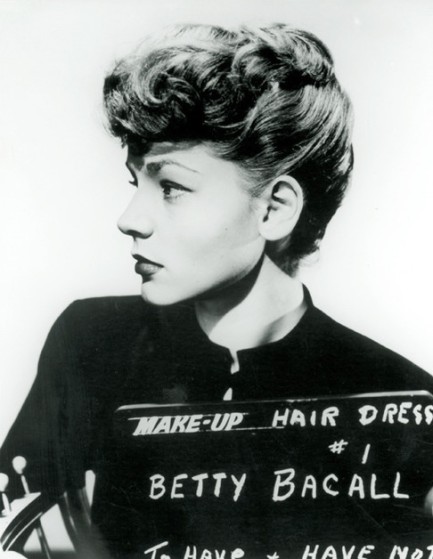






































 Howard Hawks directed, and Jules Furthman and William Faulkner wrote a screenplay that changed the location of the novel, its time period, its subtext, and its characters. Basically, Warners wanted a follow-up to Casablanca, and that's exactly what they got, though To Have and Have Not differs from Casablanca by being light-hearted in general, and wickedly comical in parts. But there are also thrills aplenty. The basic idea is Humphrey Bogart plays a diffident charter boat captain in French Martinique who finds himself drawn into World War II thanks to an idealistic anti-Vichy cabal that plans to rescue a French patriot imprisoned on Devil's Island.
Howard Hawks directed, and Jules Furthman and William Faulkner wrote a screenplay that changed the location of the novel, its time period, its subtext, and its characters. Basically, Warners wanted a follow-up to Casablanca, and that's exactly what they got, though To Have and Have Not differs from Casablanca by being light-hearted in general, and wickedly comical in parts. But there are also thrills aplenty. The basic idea is Humphrey Bogart plays a diffident charter boat captain in French Martinique who finds himself drawn into World War II thanks to an idealistic anti-Vichy cabal that plans to rescue a French patriot imprisoned on Devil's Island.



























































